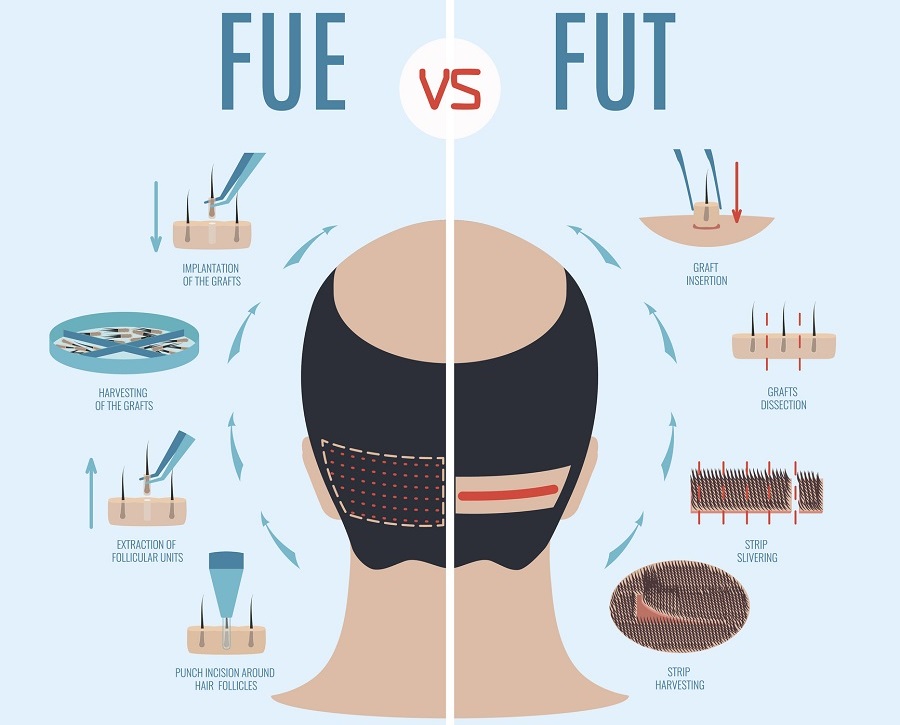

Hair loss can be a difficult experience for many people, impacting their self-confidence and self-esteem. Hair transplants have become a popular option for those looking to restore their hairline and regain their confidence. However, with so many hair transplant methods available, it can be challenging to choose the right one for you. The two most popular methods are Follicular Unit Extraction (FUE) and Follicular Unit Transplantation (FUT). In this article, we’ll explore the difference between FUE and FUT hair transplants.
What is FUE Hair Transplantation? FUE hair transplantation involves extracting individual hair follicles from the donor area, typically the back of the scalp, and transplanting them to the recipient area, where hair loss is evident. The surgeon uses a small punch tool to extract each follicular unit one by one, which leaves tiny circular scars that are barely visible. The follicular units are then placed in the recipient area, where the surgeon carefully implants them to create a natural-looking hairline.
One of the significant benefits of FUE hair transplantation is that it doesn’t leave a linear scar, making it ideal for those who prefer to wear shorter hairstyles. FUE also allows for a more precise placement of follicular units, resulting in a more natural-looking hairline. The recovery time for FUE is relatively short, and patients can typically return to their daily activities within a few days.
What is FUT Hair Transplantation?
FUT hair transplantation involves removing a strip of skin from the donor area, typically the back of the scalp, and then dissecting it into individual follicular units. The surgeon then implants the follicular units into the recipient area using a similar process as FUE. One of the significant differences between FUE and FUT hair transplantation is the scar left behind. With FUT, there is a linear scar where the strip of skin was removed. However, the surgeon can typically close the incision with sutures or staples, resulting in a thin, barely visible scar that can be easily covered with longer hair.
FUT hair transplantation can also result in a higher yield of grafts, making it an ideal option for those who need a more significant amount of hair transplantation. The recovery time for FUT is typically longer than FUE, and patients may need to take a week or more off work to recover fully.
Which Method is Best for You?
Deciding which method is best for you will depend on several factors, including your hair type, the extent of hair loss, and your preferences. Here are some of the factors to consider when deciding between FUE and FUT hair transplantation:
- Scarring: If you prefer to wear short hairstyles, FUE may be the better option, as it doesn’t leave a linear scar. However, if you’re comfortable with longer hair, FUT may be a better option, as the scar is typically thin and easily covered.
- Yield: If you need a more significant amount of hair transplantation, FUT may be the better option, as it can result in a higher yield of grafts.
- Recovery time: If you need to return to work quickly, FUE may be the better option, as the recovery time is typically shorter. However, if you have the flexibility to take time off work, FUT may be a better option, as it can result in a higher yield of grafts.
- Cost: The cost of FUE and FUT hair transplantation can vary, so it’s essential to consider your budget when deciding which method is best for you.
Final Thoughts FUE and FUT hair transplantation are both effective methods for restoring hair and regaining your confidence. The decision between the two methods will ultimately depend on your individual needs and preferences.